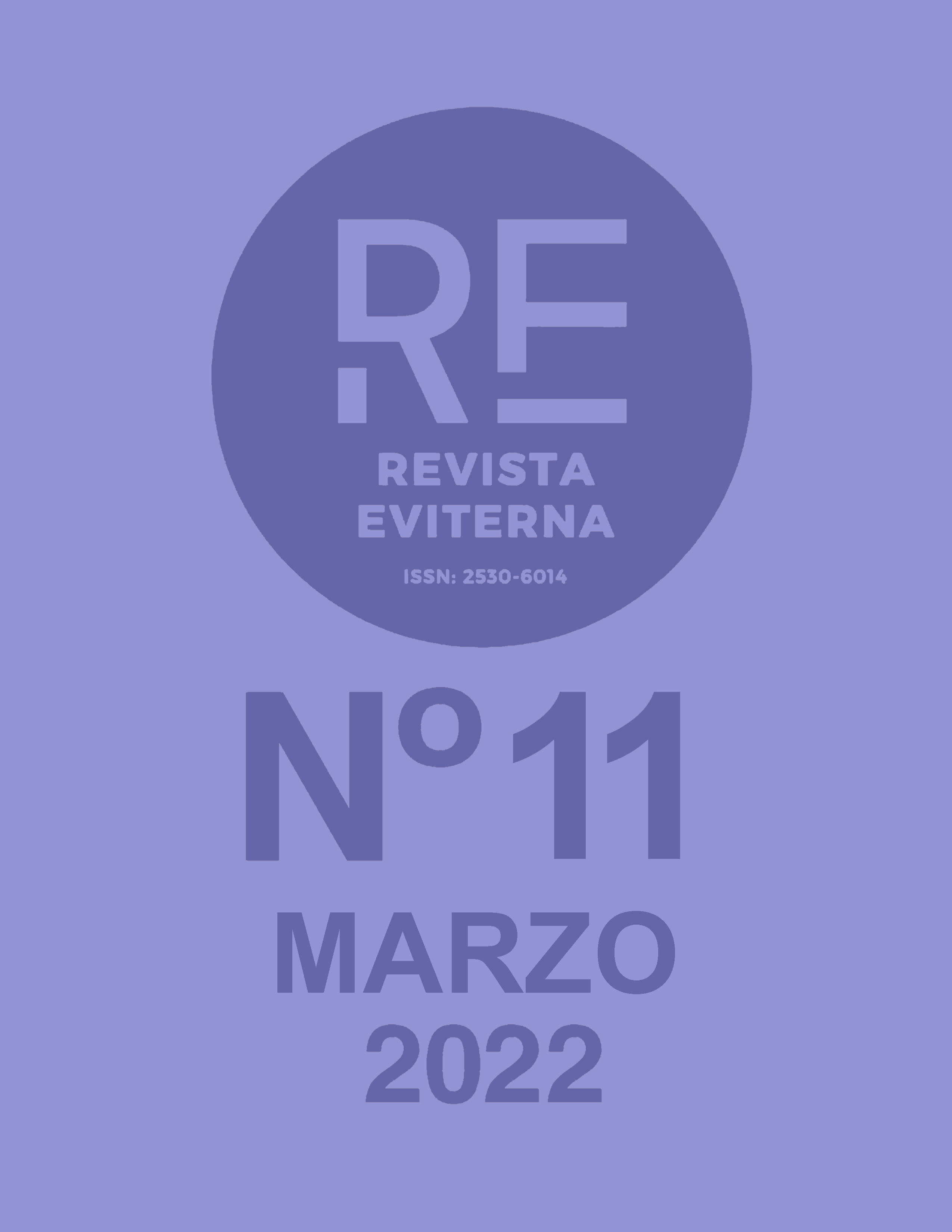El axfisiante encanto de la burgesía
Tragedia y naufragio de la civilización en El angel exterminador de Luis Buñuel
DOI:
https://doi.org/10.24310/Eviternare.vi11.14194Palabras clave:
encierro, guión, masonería, misterio, terrorResumen
En 1962 Luis Buñuel rodó en México El ángel exterminador, un argumento en el que había comenzado a trabajar en la década de 1940. Partiendo del análisis comparado entre el guion técnico escrito y manejado por Buñuel durante el rodaje y la película, se propone un análisis de los temas nucleares de este filme, especialmente de aquellos en los que su autor quiso hacer hincapié, sus motivaciones, su origen y las conexiones con el conjunto de su obra. En uno de los momentos más críticos de la Guerra Fría, Buñuel construyó un crudo retrato de las convenciones burguesas, asumidas como la norma que sostiene el orden establecido y causantes del inmovilismo y la inacción de una sociedad empeñada en ignorar los problemas reales. Presenta a los burgueses encerrados misteriosamente en su mansión como náufragos de una civilización que, tras las tragedias vividas durante la II Guerra Mundial, elige repetir sus errores y ahogarse. El relato está recorrido por constantes alusiones al libro del Apocalipsis, textuales y sugeridas, un mundo marcado por las plagas (físicas y morales) que asolan la civilización. Y para alimentar esta atmosfera, Buñuel hizo uso de las estrategias propias del cine de terror, que conocía bien y que él mismo había ensayado en algunos guiones previos. Además, estrechamente vinculadas a la idea de misterio, introdujo en la película repetidas alusiones a la masonería para rendir homenaje a través de ellas a su amigo Juan Vicens. En definitiva, en términos estructurales y temáticos Buñuel procuró transmitir sus dudas acerca de los avances de la civilización, al tiempo que insistía en la condición misteriosa e inescrutable de la existencia.
Descargas
Métricas
Publicación Facts
Perfil de revisores N/D
Información adicional autores
Indexado: {$indexList}
-
Indexado en
- Sociedad Académica/Grupo
- N/D
- Editora:
- Universidad de Málaga
Citas
Aub, Max (1985). Conversaciones con Buñuel. Madrid: Aguilar.
--- (2019). Buñuel. Todas las conversaciones. Zaragoza: Prensas de la Universidad.
Buñuel, L. (1982). Obra literaria. Zaragoza: Heraldo de Aragón.
--- (1996). Mi último suspiro. Barcelona: Plaza & Janés.
Desnos, R. (1966). Cinéma. Textes réunis et présentés par André Tchernis. París: Gallimard.
García Riera, E. (1973). Historia documental del cine mexicano. Volumen VIII. México DF: Era.
Gubern, R. (2005). Las fuentes de Un perro andaluz en la obra de Dalí. En AA. VV: Ola Pepín! Dalí, Lorca y Buñuel en la Residencia de Estudiantes. Madrid: Fundación Caixa Catalunya-Residencia de Estudiantes.
--- (2006). Proyector de luna. La Generación del 27 y el cine. Barcelona: Anagrama.
Martín, F. G. (2010). El ermitaño errante. Buñuel en Estados Unidos. Murcia: Filmoteca Regional Francisco Rabal.
Pérez Turrent, T. & de la Colina, J. (1999). Buñuel por Buñuel. Madrid: Plot.
Sánchez Vidal, A. (1982). Notas. En Buñuel, L. Obra literaria. Zaragoza: Heraldo de Aragón.
--- (1984), Luis Buñuel. Obra cinematográfica. Madrid: JC.
--- (1993), El mundo de Buñuel. Zaragoza: CAI.
--- (2000). Buñuel, Lorca, Dalí. El enigma sin fin. Barcelona: Planeta.
--- (2009). Transferencias. En AA.VV., Un perro andaluz 80 años después. Vol I. Madrid: SECC.
Fuentes documentales
Buñuel. (1945). Hallucinations about a dead hand. Filmoteca Española/Archivo Buñuel 5271, 1 a 4.
Buñuel, L y Rubia Barcia, J. (1946). La novia de los ojos deslumbrados. Archivo General de la Nación de México. Fondo Instrucción Pública y Bellas Artes. Sección Propiedad Artística y Literaria, número de registro 840.
Buñuel, L. y Alcoriza, L. (1962). El ángel exterminador. Filmoteca Española/Archivo Buñuel 527.
Publicado
Cómo citar
Número
Sección
Licencia
Todos los contenidos publicados en Revista Eviterna están sujetos a la licencia Creative Commons Reconocimento-NoComercia-Compartirigual 4.0 cuyo texto completo puede consultar en <http://creativecommons.org/licenses/by-nc-sa/4.0>

Se pueden copiar, usar, difundir, transmitir y exponer públicamente, siempre que:
- Se cite la autoría y la fuente original de su publicación (revista, editorial y URL de la obra).
- No se usen para fines comerciales.
- Se mencione la existencia y especificaciones de esta licencia de uso.
Los derechos de autor son de dos clases: derechos morales y derechos patrimoniales. Los derechos morales son prerrogativas perpetuas, irrenunciables, intransferibles, inalienables, inembargables e imprescriptibles.
De acuerdo con la legislación de derechos de autor, Revista Eviterna reconoce y respeta el derecho moral de los autores/as, así como la titularidad del derecho patrimonial, el cual será cedido a la Universidad de Málaga para su difusión en acceso abierto.
Los derechos patrimoniales, se refieren a los beneficios que se obtienen por el uso o divulgación de las obras. Revista Eviterna se publica en open access y queda autorizada en exclusiva para realizar u autorizar por cualquier medio el uso, distribución, divulgación, reproducción, adaptación, traducción o transformación de la obra.
Es responsabilidad de los autores/as obtener los permisos necesarios de las imágenes que están sujetas a derechos de autor.







12.png)



